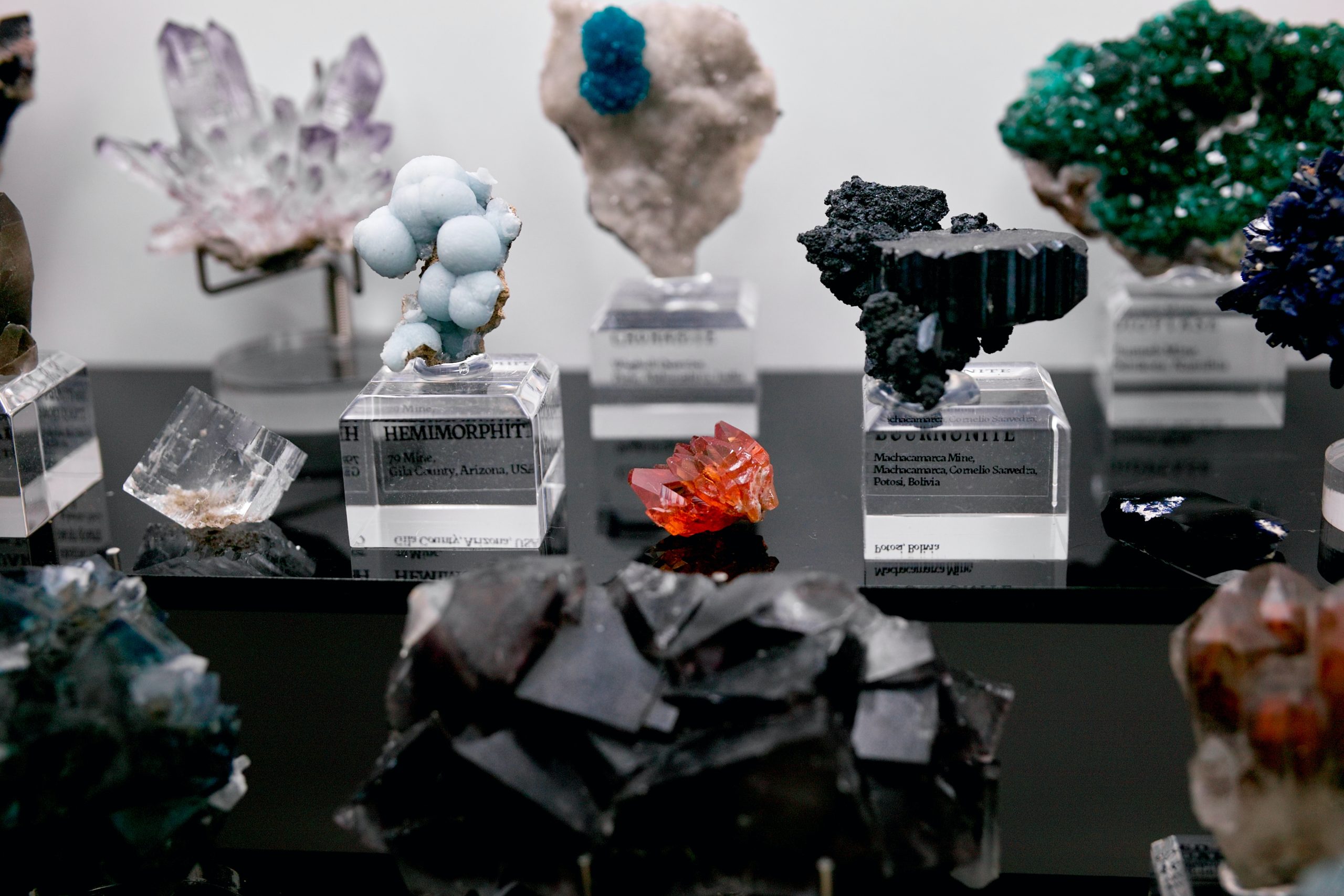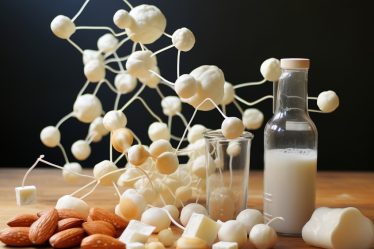
Dear Chemistry student, have you heard of halides? They are crucial compounds everywhere in our daily lives and nature. This article will thoroughly explore halides, including their definition, types, properties, and crucial role in our daily lives and the environment. We will also discuss some fascinating chemical reactions involving halides and present a simple, supervised halide experiment you can perform.
To help you understand this subject, we will highlight the importance of a chemistry tutor or private teacher and how one-on-one lessons can significantly improve your understanding of halides. Finally, we will address common questions about halides in our FAQ section. This comprehensive guide establishes a strong foundation for students and chemistry enthusiasts to comprehend and appreciate the world of halides.
If you’re seeking a chemistry tutor, Meet’n’learn’s got you covered. Their team of knowledgeable teachers can assist you in excelling at the subject. Visit meet’n’learn to discover the ideal tutor for your needs.
Struggling with biology topics? Explore our extensive collection of biology educational blog posts designed to simplify complex concepts for you. Whether it’s photosynthesis, the intricacies of green algae, understanding bacteria and viruses, or delving into the fascinating world of genetics, our resources have got you covered. Expand your knowledge and enhance your learning journey with us today.
What Are Halides? Definition and Explanation
In the vast domain of chemistry, halides hold an impressive stature. They are a group of chemical compounds derived from halogens, constituting Group 17 of the periodic table. These halogens include fluorine (F), chlorine (Cl), bromine (Br), iodine (I), and astatine (At). Upon gaining an electron, these elements transmute into negatively charged ions, known as halide ions.
Consequently, most halides are ionic compounds, constituted by a halide ion and a positively charged metal ion forming a stable compound. This stable formation arises from the perfect balance of positive and negative charges, leading to interesting chemical behaviors.
Need help with the covalent bond? Check out our blog post on “Covalent Bond: Definition, Formation, and Types with Examples”.
Types of Halides
Due to their diverse nature, Halides can be sorted into different types based on the halogen they originate from. Here are some common types of halides:
- Fluorides: These halides are derived from fluorine. They include compounds like sodium fluoride (used in toothpaste) and calcium fluoride (found in nature as the mineral fluorite).
- Chlorides: Originating from chlorine, examples of chlorides include sodium chloride (table salt) and hydrochloric acid (a key chemical in various industries).
- Bromides: These are halides derived from bromine. Potassium bromide, for example, was historically used as a sedative.
- Iodides: Iodides are formed from iodine. An example is potassium iodide, often used in photography and treatment of certain thyroid conditions.
- Astatides: These are derived from astatine, the rarest naturally-occurring element on Earth. Astatine is mostly used in the production of certain cancer treatments.
These halides interact with other elements or groups to form various compounds. Some halides are organic, meaning they are directly bonded to a carbon atom, while others are inorganic. Regardless of their type, halides have far-reaching applications in various scientific and industrial fields.
Do you have trouble understanding hydroxides? Our blog post “Understanding Hydroxides: An Essential Guide for High School Chemistry Students” is a great online resource.
The Unique Properties of Halides
Regarding chemistry, every compound showcases unique properties, and halides are no exception. Emerging from the characteristics of halogens, halides inherit several distinguishing features. Let’s delve into these properties that set halides apart:
- Electronegativity: Halogens, being the most electronegative elements on the periodic table, pass on this property to their derivatives – the halides. High electronegativity endows halides with an extraordinary ability to form ionic compounds.
- Variation: The properties of halides are not homogenous; they differ depending on the specific halogen they originate from. This variation adds complexity to the halide group.
Drilling down into the variation within the halide group, we observe some intriguing contrasts. For example, fluorides, due to the high electronegativity and compact atomic radius of fluorine, are generally more stable and less reactive than iodides. On the other hand, iodides, characterized by a larger atomic size and lower electronegativity of iodine, demonstrate a different reactivity pattern. This diversity in reactivity and stability paints a fascinating landscape for chemists to navigate and utilize in various chemical processes.
Are you struggling with mass fraction? Our blog post “Mastering Mass Fraction: A Comprehensive Guide to Chemistry Concepts, Definitions, and Examples” is a great online resource.
Halides in Daily Life
Halides are not just a topic of interest for scientists and students; they are integral to our daily lives. Their contribution often needs to be recognized, yet they are found in several everyday products and processes.
Everyday uses of halides
One of the most prevalent examples of halides in our day-to-day lives is sodium chloride, also known as table salt. Used extensively for cooking and preservation, sodium chloride is a halide we encounter daily. Another common halide is potassium chloride, found in many food products as a salt substitute and in fertilizers. Fluorides, another type of halide, are essential in dental care products like toothpaste and mouthwash for their property to fight tooth decay.
Examples of halides in the environment
Halides are also widely present in the natural environment. Chlorides, for instance, are a major component of seawater, contributing to its salinity. Bromides naturally occur in seawater and some mineral deposits. Additionally, halides play a critical role in the ozone layer depletion, with chemicals such as chlorofluorocarbons (CFCs) and hydrochlorofluorocarbons (HCFCs), both halide-based, known to have detrimental effects on the ozone layer. This environmental impact of halides makes them an important subject in environmental studies and policies.
Are you struggling with determining the concentration of a solution? Our blog post “Step-by-step Guide on How to Calculate the Concentration of a Solution” can be a valuable online resource to assist you.
The Role of Halides in Chemical Reactions
Halides play an integral role in various chemical reactions due to their inherent reactivity and versatile properties. Their roles in chemistry span a wide range of reactions, from simple redox reactions and displacement reactions to more complex processes in organic chemistry.
One example of a redox reaction involving halides is the reaction between sodium bromide and chlorine, where chlorine is more electronegative and displaces bromine, resulting in sodium chloride and bromine:
NaBr + Cl2 → NaCl + Br2
Displacement reactions are another common class of reactions in which halides participate. An example is the reaction between silver nitrate and sodium chloride, which results in the formation of a precipitate of silver chloride:
AgNO3 + NaCl → AgCl + NaNO3
Halides also find substantial applications in organic chemistry, where they engage in reactions such as nucleophilic substitutions and elimination reactions. For instance, in a classic SN2 reaction, bromomethane reacts with a hydroxide ion to form methanol and a bromide ion:
CH3Br + OH– → CH3OH + Br–
These are just a few examples that showcase the wide-ranging roles of halides in chemical reactions. The ability of halides to interact with various other elements and compounds makes them essential contributors to the vast landscape of chemical processes.
Need help with molar mass? Our blog post “Mastering Molar Mass: A Comprehensive Tutoring Guide for High School Students” is a great online resource.
Exploring a Halide Experiment
Experiments are an excellent way to understand and appreciate the properties and reactions of halides. Here, we present a simple, safe experiment that you can carry out in a school laboratory to observe the reactions of different halides with silver nitrate.
Objective
To observe the colors of the precipitates formed when solutions of various halides react with silver nitrate.
Materials
- Potassium chloride solution (KCl)
- Potassium bromide solution (KBr)
- Potassium iodide solution (KI)
- Silver nitrate solution (AgNO3)
- 3 test tubes
- Test tube rack
Procedure
- Label the three test tubes as Chloride, Bromide, and Iodide.
- Add a few drops of potassium chloride solution to the Chloride test tube.
- Similarly, add a few drops of potassium bromide solution to the Bromide test tube and potassium iodide solution to the Iodide test tube.
- Now, carefully add a few drops of silver nitrate solution to each test tube.
- Observe and note down the color of the precipitate formed in each test tube.
Observations and Conclusions
Upon adding silver nitrate, you will observe that each halide forms a different colored precipitate. The chloride solution forms a white precipitate (silver chloride), the bromide solution yields a cream-colored precipitate (silver bromide), and the iodide solution produces a yellow precipitate (silver iodide).
Through this experiment, we can visualize how different halides react with the same compound (silver nitrate) to form precipitates of different colors. This simple experiment provides hands-on experience with halides and an opportunity to better understand their reactivity and behavior.
Having difficulty with viscosity? Our blog post on “Viscosity: An In-Depth Chemistry Learning Guide Prepared by Tutors” is a helpful resource.
The Importance of Tutors in Understanding Halides
Diving into complex topics like halides, you’ll find a tutor to be an indispensable guide. With their ability to simplify challenging concepts, tutors can explain the properties and reactions of halides in a relatable way, surpassing what textbooks or digital resources alone might offer.
A significant advantage of a tutor is the ability to tailor their teaching methods to your learning style. This personal approach facilitates effective understanding and engagement. A tutor’s one-on-one attention and personalized feedback can elevate your confidence and motivation, fostering successful learning.
A good tutor encourages questioning, which is crucial when learning about halides. Their consistent support makes the complex world of halides more approachable, nurturing a deeper understanding of the subject. In essence, a tutor is invaluable in your journey of mastering halides.
If you need a chemistry tutor, search for “chemistry tutor Glasgow” or “chemistry teacher Sheffield” on tutoring platforms, such as meet’n’learn for individualized help.
If group study suits you better, search “chemistry classes London” or “chemistry lessons Manchester” online to find local schools offering chemistry classes.
Conclusion: The Impact of Halides on Science
The study of halides provides a significant gateway into the fascinating world of chemistry. These compounds, derived from halogens, exhibit various properties and behaviors, making them instrumental in academic research and everyday life. Understanding halides, we unveil their ubiquitous influence – from the table salt in our kitchens to crucial industrial processes. Their importance extends to key chemical reactions and the synthesis of complex organic compounds, signifying their pivotal role in scientific exploration. The guidance of a chemistry tutor or private teacher in one-on-one lessons can be invaluable in navigating this complex topic, facilitating a comprehensive understanding of halides’ impact on science and the world around us.
If you’re seeking a chemistry tutor, Meet’n’learn’s got you covered. Their team of knowledgeable teachers can assist you in excelling at the subject. Visit meet’n’learn to discover the ideal tutor for your needs.
FAQs about Halides
1. What are halides?
Halides are binary compounds, where one part is a halogen (fluorine, chlorine, bromine, iodine, or astatine), and the other part is an element or radical that is less electronegative or more electropositive than the halogen.
2. Why are halides important?
Halides are essential in various science and daily living areas. They’re used in industrial processes, medicine, photography, and more. Plus, common substances like table salt and fluoride toothpaste are halides.
3. How do halides react in chemical reactions?
Halides, due to their ionic nature, are highly reactive and play significant roles in many chemical reactions, including redox, displacement, and various organic reactions.
4. How can I safely handle experiment halides?
Always use personal protective equipment, such as gloves and safety goggles, when handling experiment halides. Follow your teacher’s or tutor’s guidance to ensure safe experimental practices.
5. How do halides vary in their properties?
The properties of halides vary depending on the specific halogen they originate from. For instance, fluorides are generally more stable and less reactive than iodides due to differences in electronegativity and atomic size of the originating halogens.
6. Where can I learn more about halides?
You can learn more about halides through chemistry textbooks, online resources, scientific publications, and with the help of tutors who can provide personalized guidance.


